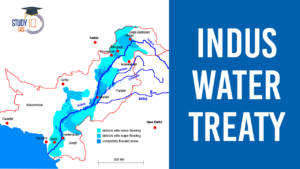Table of Contents
What is a Stone Crushing Industry?
- The stone crushing industry involves the extraction, processing, and production of crushed stone, gravel, and other aggregate materials used primarily in construction and infrastructure projects.
- This sector forms a critical part of the construction industry and contributes significantly to industrial and economic development.
Significance of Stone Cutting and Crushing Industries in India
- Contribution to Infrastructure Development: The industry plays a critical role in providing raw materials like aggregates, stones, and crushed rock essential for construction activities.
- Supports the construction of schools, hospitals, and public infrastructure in urban and rural areas.
- Employment Generation: Provides direct and indirect employment to a significant number of workers, especially in rural and semi-urban areas.
- Boost to the Economy: Generates revenue for the government through taxes, mining royalties, and export duties.
- Support for Ancillary Industries: Drives growth in allied industries such as cement, steel, and transportation.
- Creates demand for heavy machinery and equipment like crushers, loaders, and excavators.
- Export Potential: India is a major exporter of natural stone, including granite, marble, and sandstone.
- Rural and Regional Development: Stimulates local economies by creating small-scale industrial clusters in stone-rich regions.
- Facilitates the development of infrastructure in backward areas, encouraging regional balance.
- Support for Traditional Art and Architecture: Promotes India’s rich heritage of stone crafts, including sculptures, monuments, and traditional architecture.
- Revives traditional skills in stone carving and cutting, preserving cultural heritage.
Impacts
On Human Health
- Respiratory Problems: Exposure to dust from stone crushing activities is linked to a high prevalence of respiratory diseases.
- Studies indicate that up to 89% of stone-cutting workers report chronic respiratory symptoms, including chest tightness, chronic cough, and shortness of breath.
- The concentration of particulate matter (PM2.5 and PM10) in workplaces often exceeds safe levels.
- This leads to conditions such as silicosis, asthma, and chronic obstructive pulmonary disease (COPD) among workers and nearby residents.
- Other Health Issues: In addition to respiratory ailments, individuals living near stone crushing sites experience a range of health problems, including eye irritation, skin diseases, headaches, and hearing loss.
- Surveys have shown that the prevalence of these conditions is notably higher in populations within 500 meters of stone crushing operations.
- The long-term exposure to silica dust can lead to severe health complications, including lung fibrosis and increased mortality rates among workers.
- Economic Burden: The health impacts translate into significant economic costs for affected individuals due to increased medical expenses and loss of productivity.
On Agricultural Output
- Soil Degradation: The dust generated by stone crushing not only pollutes the air but also settles on soil surfaces, altering its pH and reducing fertility.
- This contamination can hinder plant growth by affecting germination rates and nutrient uptake.
- g., Studies indicate that crops such as rice show reduced germination frequency and lower yields in areas affected by stone dust pollution.
- Crop Yield Reduction: Research has demonstrated that stone dust adversely affects various growth parameters in plants, including shoot length, root length, chlorophyll content, and overall yield.
- This decline in agricultural productivity poses a threat to food security for communities relying on agriculture for their livelihoods.
- Water Quality Issues: The runoff from stone crushing sites can contaminate local water sources, further impacting agricultural practices by affecting irrigation water quality.
- Contaminated water can lead to reduced crop yields and compromised food safety.
On Animals
- Habitat Avoidance: The cumulative effects of noise pollution can lead to a decline in local biodiversity as sensitive species either adapt poorly or are unable to thrive in altered environments. This loss can destabilize ecosystems and disrupt food webs.
- Communication Interference: Many animal species rely on vocalizations for communication, mating calls, and warning signals.
- Noise pollution from stone crushing can mask these sounds.
- This interference can lead to decreased mating success and increased vulnerability to predators.
Mitigation Measures
- Regular health checkups and use of safety gear like masks and earplugs for workers.
- Installing dust suppression mechanisms like water sprays at crushing sites.
- Creating green buffer zones around stone-cutting units to limit dust dispersion.
- Educating farmers about dust impacts and encouraging organic soil rejuvenation techniques.
- Enforcing strict environmental regulations for stone-cutting industries.


 Places in News for UPSC 2025 for Prelims...
Places in News for UPSC 2025 for Prelims...
 Vizhinjam International Seaport Project,...
Vizhinjam International Seaport Project,...
 Indus Water Treaty 1960 Suspended by Ind...
Indus Water Treaty 1960 Suspended by Ind...





















